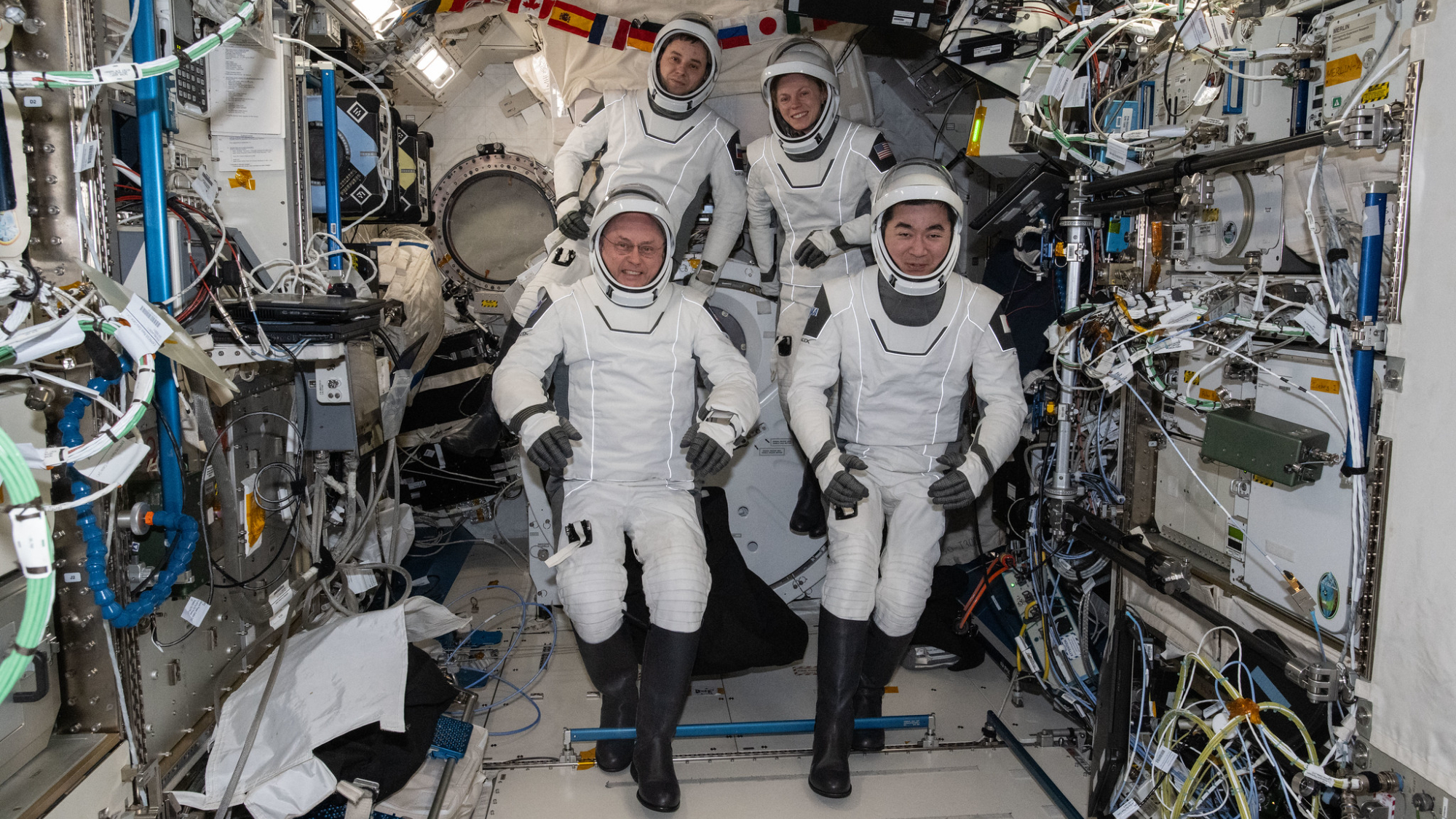Asteroid Threat Scale Revised
A Richter Scale-like gauge designed to communicate asteroid risk has been revised in an effort to make it clearer to journalists and the public.
The Torino Scale, contentious since its introduction in 1999, rates asteroids based on the chances they might strike Earth, when an impact could occur, and how significant the devastation would be. Its use has never achieved the level of visibility of its quake-gauging cousin, but some astronomers are still hopeful it will meet its goal of aiding in improved communication from scientists to the masses.
The scale's revision, first reported in 2003 by SPACE.com, has been formally published and was announced Tuesday.
The scale runs from zero to 10. Only one asteroid has ever risen as high as level 4. That space rock had astronomers temporarily very concerned in December 2004. But the odds of an impact in the year 2029 were eventually eliminated. The whole event put the Torino Scale in the spotlight, but because it played out largely over Christmas, far less of the public ever even know there was, for a time, a 1-in-45 chance of widespread destruction.
When other space rocks have inched above the zero ranking, they have sometimes made big headlines even though odds of any future impact where still of the one-in-a-million variety.
Not everyone agrees
Critics have suggested the Torino Scale is too complex and that asteroid risks are too remote, complex and variable to be boiled down to simple numbers and colors, among other concerns. The scale's creator, MIT professor Richard Binzel, acknowledges his critics' claims that the original Torino scale was actually scaring people, "the opposite of what was intended," Binzel said Tuesday in a statement, and hence the revisions.
Breaking space news, the latest updates on rocket launches, skywatching events and more!
A Torino ranking of zero means virtually no chance of collision. A 10 means things are going to be really ugly quite soon. The basic numbers haven't changed, but the wording of each category has.
For example, in the original scale objects ranked 2 to 4 were described as "meriting concern." The revised scale describes those rocks as meriting attention by astronomers, but not necessarily the public.
When they are first discovered, asteroids can sometimes appear to be on a course that might hit Earth after several trips around the Sun, based on complex computer forecasts. But those projections are usually based on just a few days of observations, so the rock's true path is not well known. The new language of the scale emphasizes that continued tracking typically reduces the hazard level to zero.
Alternatives
Meanwhile, the need for an alternative spawned the similar Palermo Technical Impact Hazard Scale in 2001. It has not been used by journalists as widely or frequently as the Torino Scale.
Benny Peiser, a researcher at Liverpool John Moores University in the UK, thinks both scales are inadequate because they tend to flag objects of concern when the orbital data is not yet sufficient to accurately show where the rock will go in the future.
"The introductions of first the Torino and then the Palermo hazard scales have failed to solve the [near-Earth object] risk communication problems," Peiser said Tuesday. "The crux of the problem has been their failure to realize that in assessing any probable risk, the central communication issue is not impact probability or size, but the reliability of observational data and the historical context (and thus urgency) of the risk."
In 2003, yet another scale was proposed. The Purgatorio Ratio was devised by Brain Marsden of the Minor Planet Center, the central clearinghouse for asteroid data. It focuses on the ratio of the known path of a newly discovered object to the amount of time before any predicted possible impact would occur. An object with scant data and a potential impact many decades away gets a lower rating, even if the odds of impact appear somewhat high at first blush.
The Purgatorio Ratio would, in theory, remove some of the urgency that is often attached to an asteroid that might hit Earth in the distant future (urgency that journalists sometimes pick up on, and which perpetually frustrates scientists). Its use in the media has been minimal, however, and it is not promoted by asteroid experts at NASA, which provides the bulk of the funding for asteroid search programs.
For not, the Torino Scale remains a frontrunner in a pack of little-known hazard gauges designed to let humanity know of the risk of potentially devastating events that all leading experts agree are very unlikely to occur anytime soon.
"The revisions in the Torino Scale should go a long way toward assuring the public that while we cannot always immediately rule out Earth impacts for recently discovered near-Earth objects, additional observations will almost certainly allow us to do so," said Donald Yeomans, manager of NASA's Near Earth Object Program Office.
The new Torino Scale can be viewed on this NASA site.
- Asteroid Impacts and the Odds of Dying
- Catastrophe Calculator: Estimate Asteroid Impact Effects Online

Rob has been producing internet content since the mid-1990s. He was a writer, editor and Director of Site Operations at Space.com starting in 1999. He served as Managing Editor of LiveScience since its launch in 2004. He then oversaw news operations for the Space.com's then-parent company TechMediaNetwork's growing suite of technology, science and business news sites. Prior to joining the company, Rob was an editor at The Star-Ledger in New Jersey. He has a journalism degree from Humboldt State University in California, is an author and also writes for Medium.
